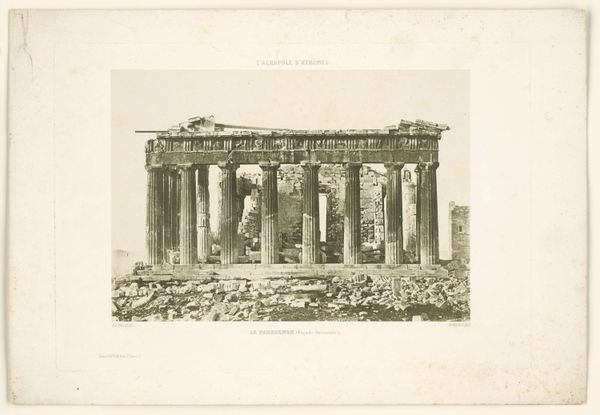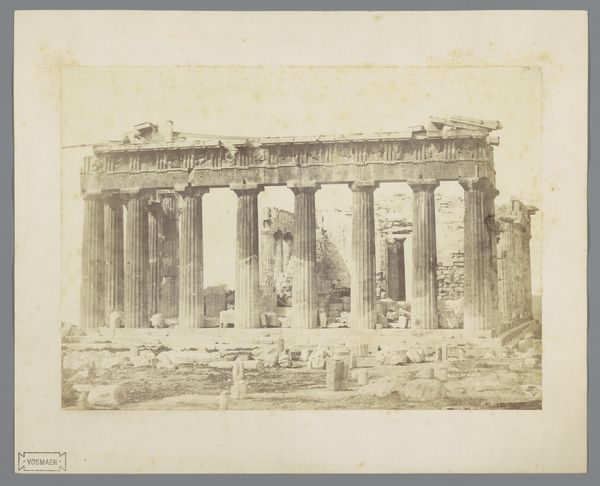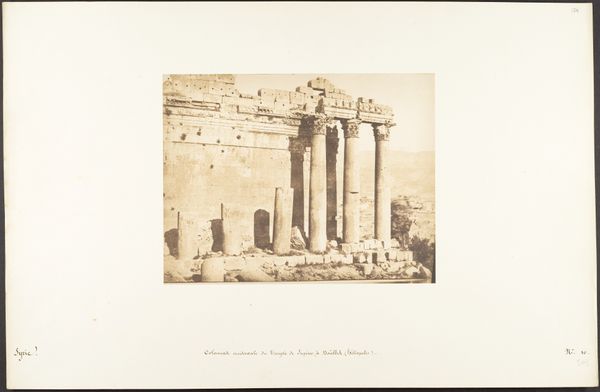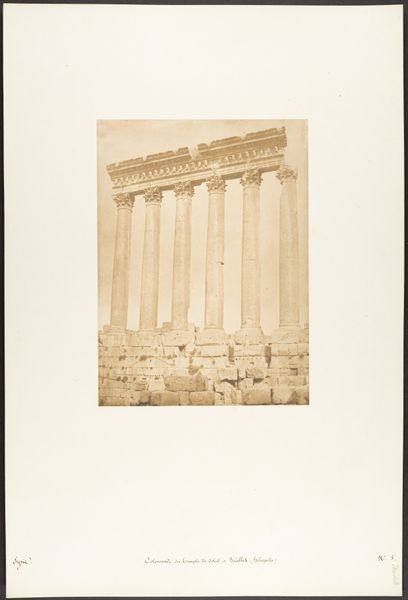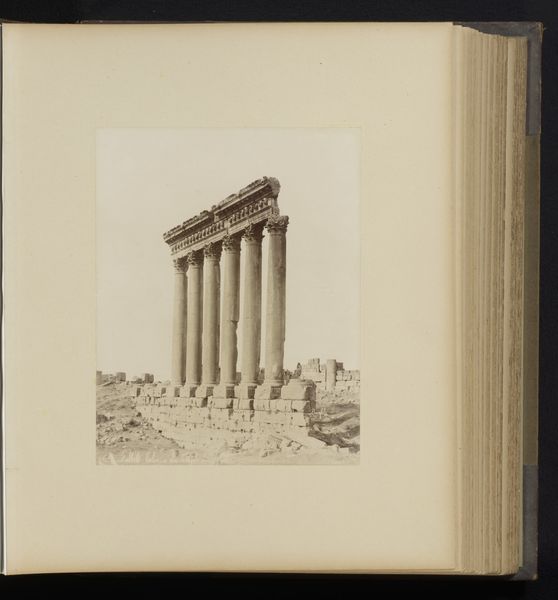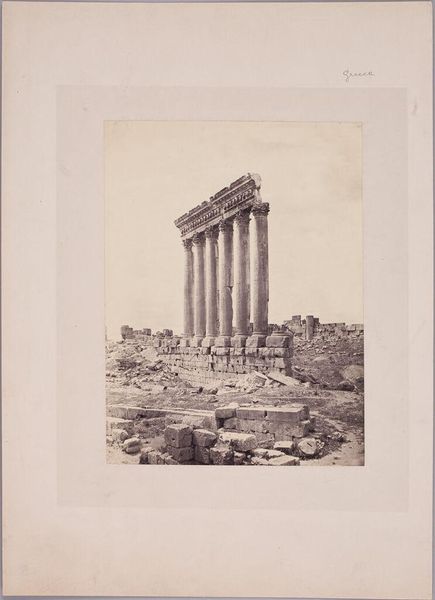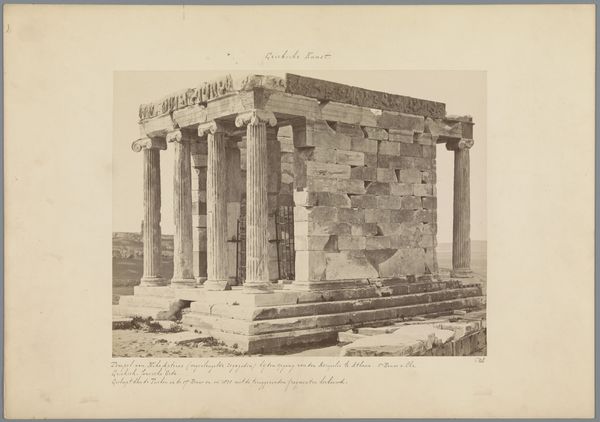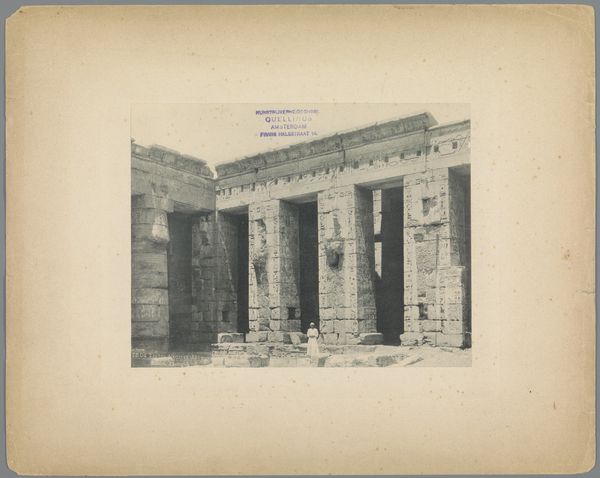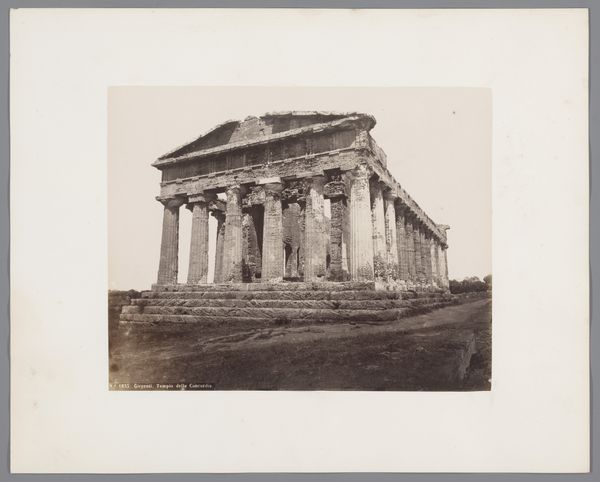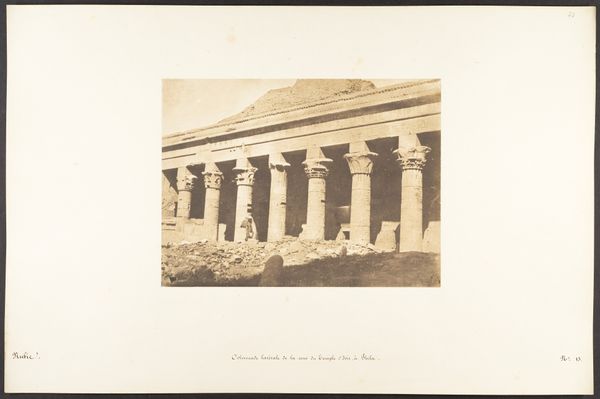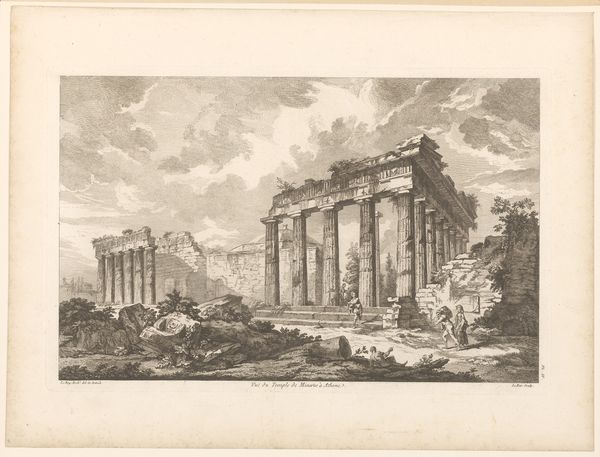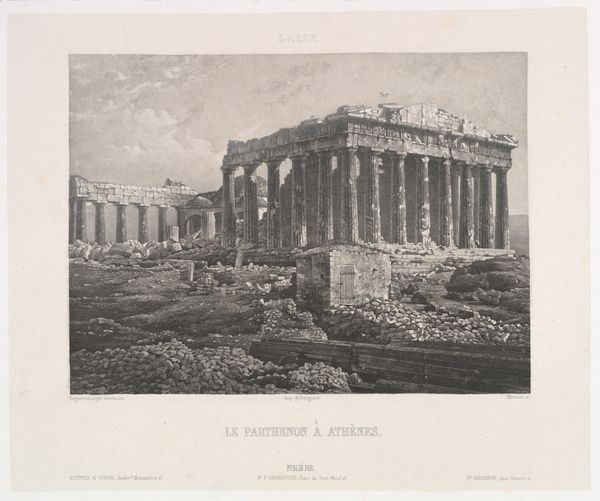
Colonnade du Temple du Soleil, à Baâlbek (Héliopolis) 1850
0:00
0:00
daguerreotype, photography, architecture
#
landscape
#
daguerreotype
#
classical-realism
#
photography
#
ancient-mediterranean
#
column
#
architecture
Dimensions: Image: 6 9/16 × 8 1/4 in. (16.7 × 21 cm) Mount: 12 5/16 × 18 11/16 in. (31.2 × 47.5 cm)
Copyright: Public Domain
Editor: This photograph, "Colonnade du Temple du Soleil, à Baâlbek (Héliopolis)" by Maxime Du Camp, taken around 1850, shows the ruins of some really striking columns. They're imposing, but also fragile-looking somehow. It's incredible that a daguerreotype could capture this scene! What strikes you most about this work? Curator: I'm drawn to the sheer labor embedded within those ancient stones, now captured through another labor-intensive process: early photography. Think of the physical effort expended quarrying, transporting, and erecting those massive columns, designed to impress. And then consider Du Camp’s own undertaking. Editor: So you’re focusing on the act of creation itself? The materials involved? Curator: Absolutely. Look at the materiality of the photograph. A daguerreotype, a unique image on a silvered copper plate. It demanded meticulous preparation and skill. The subject and the medium speak to each other, really. Both involve immense, tangible work, a mastery over material. Du Camp isn't just recording a scene; he's documenting a process – both his own and that of the temple builders. How does understanding that process change your view? Editor: It makes me think about access to resources. Who had the power to command those ancient resources, that labor? And then, who had the means to commission and create a daguerreotype? There’s a parallel there. Curator: Precisely! We see an echo across centuries in how materials and labor are organized, revealing social hierarchies and patterns of consumption in both eras. Editor: I hadn't considered it that way. I was initially just thinking about the aesthetic impact. But understanding the labor really adds another layer to its impact! Curator: It is exciting when a work transforms this way!
Comments
No comments
Be the first to comment and join the conversation on the ultimate creative platform.
